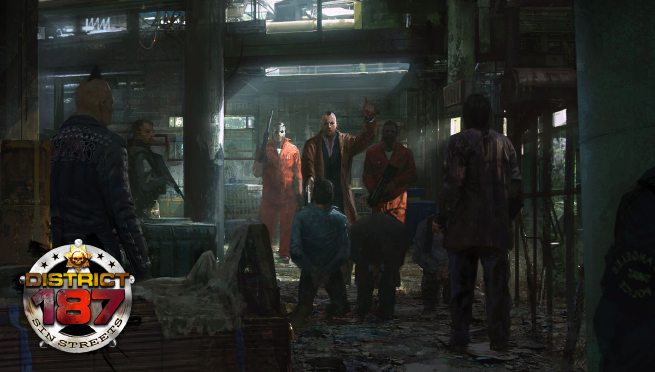CJ GameLab wants to keep you guessing. While District 187: Sin Streets, the Korea-based studio’s upcoming free-to-play first-person shooter (FPS) for the PC, comes wrapped in a familiar-looking cops versus robber package, the developers have big plans to make sure the constantly evolving multiplayer-only experience is anything but ordinary.
Admittedly, it doesn’t feel that way when you first play it. If you even so much as looked at an FPS game within the last decade, you’ll likely feel comfortable playing Sin Streets. Sure, you can customize your avatar and modify your guns to your heart’s content, but at its core, the game is all about maintaining a high level of competition. It actually plays a lot like another competitive FPS in the market: Counter-Strike, Valve’s popular mod-turned-full-game franchise.
According to CJ Games Global producer Jon-Enée Merriex, this familiar feeling was intentional.
“One of the important parts [of District 187] is getting in and playing a quick round,” Merriex told GamesBeat. “We don’t want people to feel like they have to play for a year to do anything meaningful.”
To keep the competitive experience feeling fresh, Merriex described two key aspects to Sin Streets’ 8-on-8 multiplayer (only 1-on-1 play with a game tester was possible at the time of the demo): the important roles of the game masters (GM) and its “progressive” campaign.
Headshot Saturdays
When the developers are away, the GMs are in charge: The weekends are the sole domain of the game’s many GMs, and it’s up to them to determine what sort of special promotions and tournaments that’ll run from Fridays through Sundays. They’ll monitor the in-game chat, clan performance, and sentiments from the community before they make a judgement call.
“They determine exactly what they want to do in real time,” said Merriex, “without having to really be beholden to a…series of things that they have to do. And it kind of makes the game come alive. At that point, as a player, you really don’t know what’s going to happen when you log in on a Friday night. There might be a headshot event. And there’s other things with that as well.”
“Also, we found in other regions that certain maps are more popular than others. So some of the things we can do are [add] different missions on the map or even [additional] game modes.”
If you choose to participate in this seemingly random grab bag of weekend events, your award could be a stash of Gold (Sin Street’s in-game currency), an experience point boost, or really anything else the GMs can come up with.
An ongoing story
Sin Streets has more than just two diametrically opposed roles in the game: Multiple factions exist on either side of the conflict — such as the Mexican drug cartel, the Japanese Yakuza, or SWAT — that you can pledge your affiliation to. Not only does each faction have distinctive avatars and accessories, but their weapons will also vary in design and function.
“I think one of the nice things about the [cops and robbers] theme of [Sin Streets] is the way it really kind of permeates throughout different areas of the game,” said Merriex. “There are specific weapons that are more thematic in nature. Like for the melee weapons, right now we have a hand axe that’s kind of an unorthodox melee weapon for a shooter game. And we’re developing other things like chain knuckles…. We really want this brawling aspect [to the game].”
The thematic content extends to the multiplayer game modes as well. One of them, a bank heist mode, tasks SWAT players with protecting a bank vault and retrieving any stolen goods. Those playing as the criminals have to go into the vault, grab the cash, and return it to their base. The challenge lies in the fact that the vault is placed at the center of a map, away from either side’s spawn points.
Another as-of-yet untitled mode has SWAT members hunting down a high-value target on the opposing team, and the gangsters must protect their marked ally while completing certain objectives throughout the map.
“So there’s this progress campaign,” said Merriex, “that we want to keep doing. [We want] to tell the story with these different modes.”
VentureBeat's mission is to be a digital town square for technical decision-makers to gain knowledge about transformative enterprise technology and transact. Learn More



